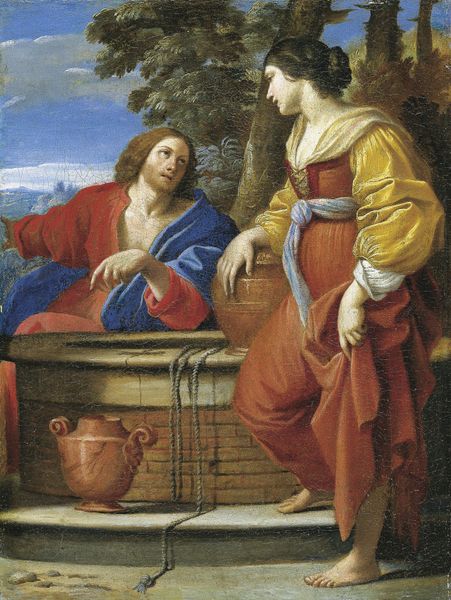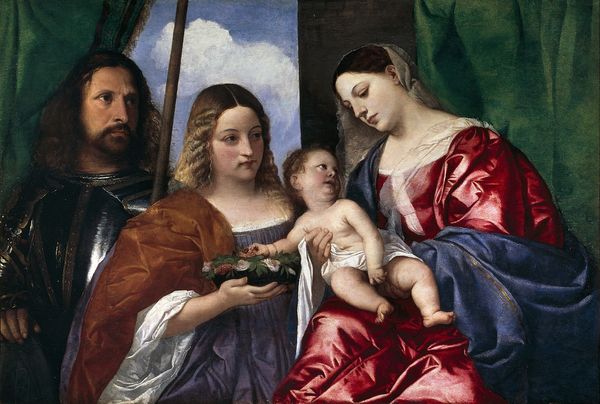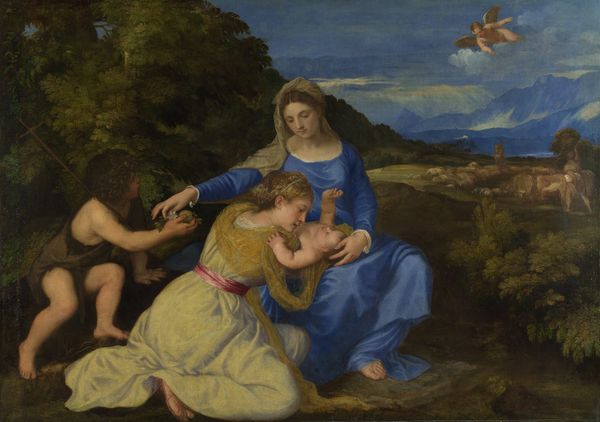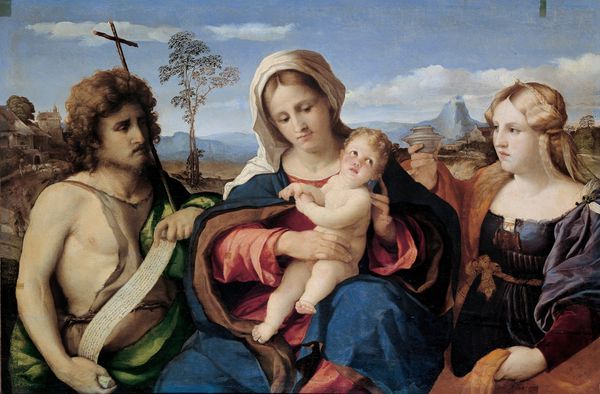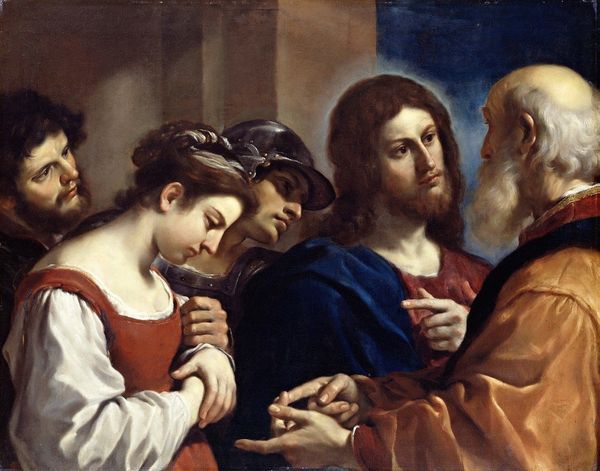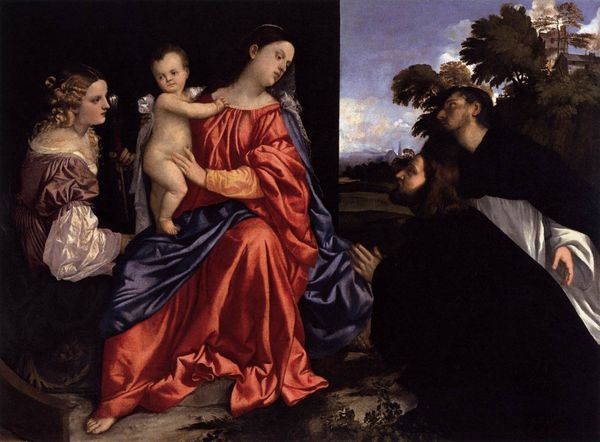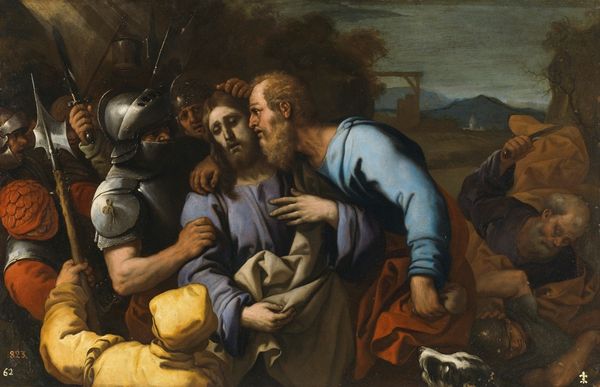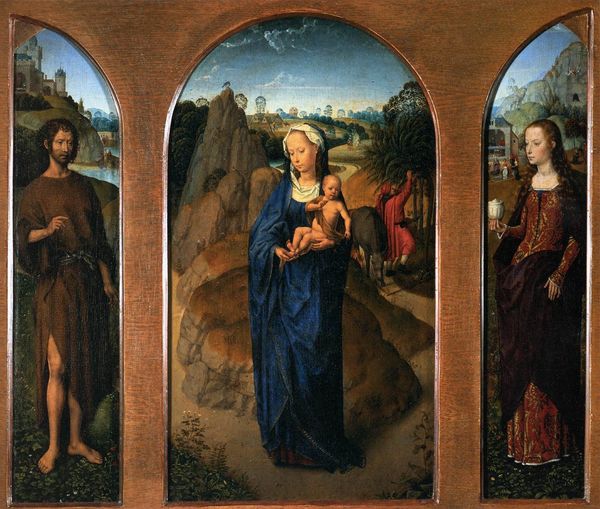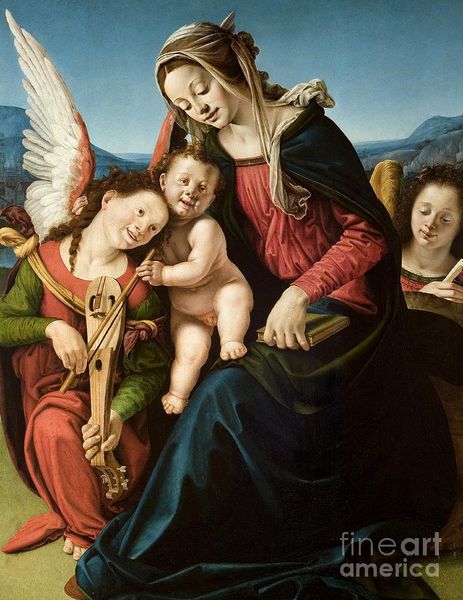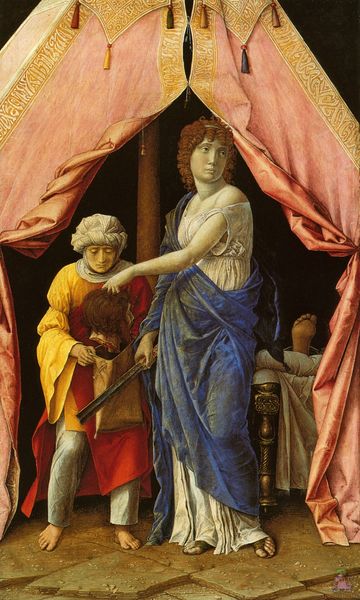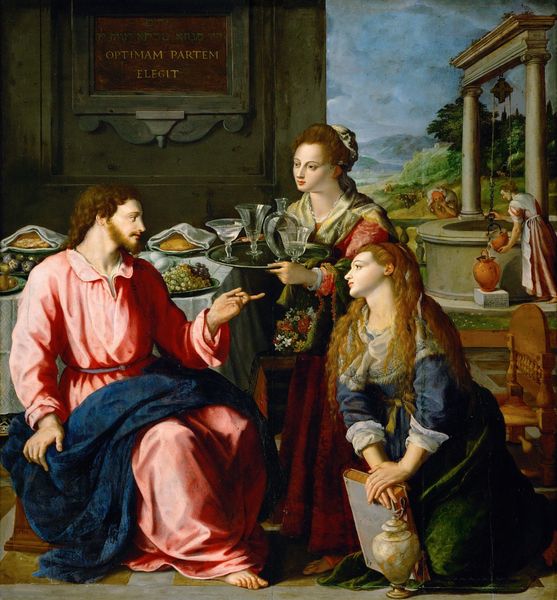
painting, oil-paint
#
portrait
#
baroque
#
painting
#
oil-paint
#
figuration
#
oil painting
#
history-painting
Copyright: Public Domain: Artvee
Editor: Here we have Guercino's oil painting, "Jesús Y La Samaritana En El Pozo," created around 1640. It depicts Jesus in conversation with the Samaritan woman at the well, set against a classical landscape. The cool and warm color contrast draws my eye to their faces and the moment of exchange between them. What do you see in this piece? Curator: Beyond the immediate biblical narrative, this image really speaks to themes of social transgression and intersectional encounter, which were especially radical within the context of 17th century artistic convention and cultural mores. Consider the significance of Jesus, a Jewish man, engaging in conversation with a Samaritan woman—a marginalized figure due to both her ethnicity and gender. What unspoken social boundaries do you think Guercino is hinting at dismantling here? Editor: I hadn’t considered the cultural context of their interaction. It does seem like Guercino is challenging societal norms by emphasizing the humanity of both figures. Curator: Precisely! This challenges viewers to reconsider prejudices by centering this moment. This is heightened by the artist’s very choice of subject matter and its historical significance. Think about the history of exclusion that inflects whose stories are told. What if Guercino sought to intervene within existing power dynamics of the day by presenting an image centered around gender, ethnicity, and cultural belonging? Editor: I now see the painting as a commentary on societal divisions. Guercino highlights the importance of cross-cultural dialogue. The work has gained greater meaning for me today. Curator: And for me as well. It’s about interrogating how the past informs the present, encouraging dialogue, and challenging preconceived notions through the lens of art history.
Comments
No comments
Be the first to comment and join the conversation on the ultimate creative platform.
